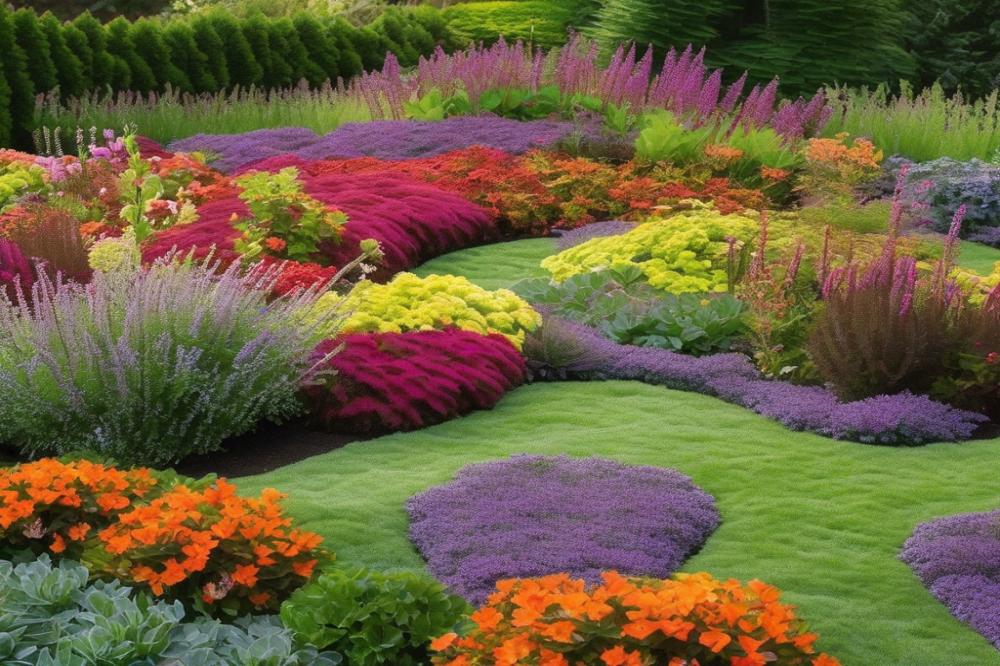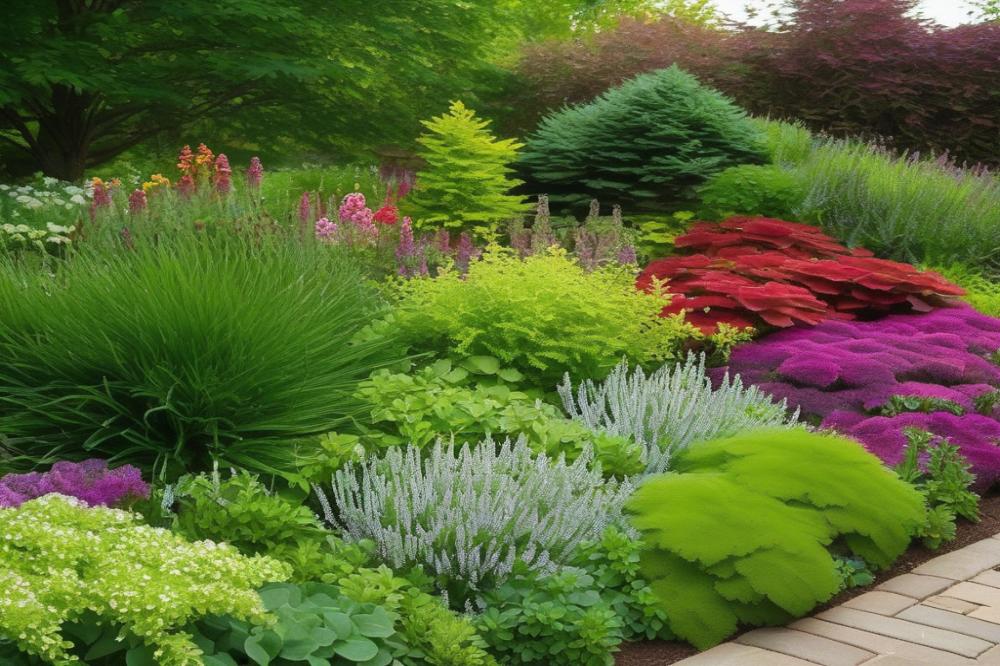Introduction
ground covers play a vital role in enhancing gardens. They serve many purposes, such as preventing soil erosion, suppressing weeds, and adding beauty to landscapes. These low-growing plants create lush carpets of greenery that can transform any outdoor space.
Caring for ground covers requires attention throughout the year. Each season brings its own challenges and benefits. With appropriate mulching and watering, these plants can thrive no matter the weather. Active pruning and pest control can foster healthier growth and vibrant foliage. Understanding soil health is essential for their long-term success.
seasonal maintenance becomes important for ensuring that ground covers withstand varying conditions. For instance, preparing them for winter protection is critical. Likewise, summer care is necessary to prevent drought-related stress. Choosing the right plants, based on their drought tolerance, can make a significant difference. With thoughtful planning and consistent attention, gardening enthusiasts can support their ground covers care effectively.
Spring Care for Ground Covers


Spring is a vital time for ground cover plants. After winter, cleaning them is essential. Remove any dead leaves or debris that accumulated over the colder months. This helps the plants breathe and promotes healthy growth.
Pruning comes next. Take away any dead or damaged foliage. This directs the plant’s energy toward new growth and keeps the area looking tidy. Be sure to use sharp tools. Clean cuts heal faster and reduce the risk of disease.
Fertilizing: Choosing the Right Type of Fertilizer
It is important to think about fertilizing during spring. Selecting the proper fertilizer promotes stronger plants. Look for a balanced fertilizer that is suited for your particular ground cover species. Generally, a slow-release option works well. Such fertilizers feed the plants gradually, aiding in their growth without causing stress.
Watering: Establishing Proper Hydration Levels
Watering deserves careful consideration. Ground covers require adequate hydration, especially during their active growing season. Monitor moisture levels in the soil. If it’s too dry, give them a deep watering. This encourages deep root growth and increases drought tolerance. Aim to water early in the morning to reduce evaporation and get the most benefit.
mulching: Benefits and Techniques
Mulching can be highly beneficial for ground cover plants. It helps retain soil moisture and suppresses pesky weeds. Choose organic mulch, such as shredded bark or wood chips. Spread a layer about 2-3 inches thick around the base of the plants. Be careful not to pile it against the stems, as this can lead to rot.
Keeping an eye on soil health is equally vital. Regular testing can inform you about nutrient needs. Adjustments in care might be necessary based on tests. Observing your plants for signs of stress can help in managing pest control and identifying issues early. Spreading mulch can also fortify the soil, making it richer over time.
When selecting plants, consider their specific needs. Some varieties will flourish in certain conditions while others may not. Pairing the right ground covers with the right environment enhances overall health and visual appeal. Adopting these spring care practices will lay a strong foundation for the growing season ahead.
Summer Care for Ground Covers


Maintaining soil health during hot months is essential for the longevity of your plants. Hot temperatures can dry out the ground quickly. To combat this, consider adding organic matter to your soil. Compost improves water retention, giving roots more access to moisture.
Watering needs change significantly in summer. Many ground covers have some degree of drought tolerance, making them resilient in dry spells. During extreme heat, deep watering is crucial. This method promotes healthy root growth by encouraging them to go deeper into the soil.
Pest control strategies become more important when temperatures rise. Inspect your plants regularly for signs of infestation. Early detection can save your ground covers from serious damage. Use insecticidal soap or neem oil as preventive measures to keep pests at bay.
The importance of shade cannot be overstated for certain varieties. Some ground covers thrive in partially shaded areas. If your plants suffer in direct sunlight, consider planting taller plants nearby. They can provide the necessary shade during the peak of summer.
Monitoring growth is vital as some ground covers can spread rapidly. Regular pruning is suggested to keep their growth in check. Trimming can also promote denser foliage, enhancing the plant’s overall appearance. Plant selection plays a critical role, too. Choosing varieties suited for your climate ensures that they can withstand summer heat.
Applying mulch around your ground covers is beneficial. It helps conserve moisture while keeping the roots cool. Additionally, mulching can prevent weeds from overtaking your plants. This can be especially important as the growing season reaches its peak. Every little detail contributes to a thriving garden.
Fall Care for Ground Covers


As the days grow shorter and temperatures begin to dip, preparing ground covers for winter becomes essential. Protecting plants during this season helps reduce stress, allowing them to come back strong in spring.
Preparing for Winter: Reducing Plant Stress
Plants face unique stress in winter months. Cold temperatures and potential frost can take a toll. Proper care during this period helps them survive. Monitoring for signs of stress throughout the fall is key. Make adjustments in care as necessary to promote health.
Pruning and Trimming Ground Covers
Trimming away dead growth is vital for a neat appearance. Pruning also stimulates new growth. Cut back overgrown areas gently. This technique prevents pest control issues and encourages a tidy look that enhances your landscape.
Soil Health: Testing and Amending Soil
Healthy soil supports strong plants. Testing soil in the fall can give critical insights. Consider adjusting pH levels based on the results. Adding nutrients can bolster ground covers for winter months. Fertilizing is beneficial when done properly.
Mulching for Winter Protection and Insulation
Applying mulch offers significant winter protection. Mulch acts as insulation, regulating soil temperature. It can also retain moisture, aiding in drought tolerance during dry months. A good layer may help prevent weeds from springing up, giving ground covers a better chance to thrive.
Last Opportunities for Watering Before Frost
Before the first frost, thorough watering becomes crucial. This ensures that moisture is available during colder months. Check the weather forecast regularly. If a dry spell occurs, it’s vital to water ground covers adequately while temperatures allow.
Winter Care for Ground Covers
During winter, the health of your ground covers requires attention. Start by assessing them for any visible damage caused by frost or snow. Look for sections that appear brown or mushy. These signs might indicate problems that need to be addressed. Pruning back dead or damaged foliage is often a good first step. Removing these parts can boost overall plant health come spring.
Winter protection is crucial for many types of ground covers. Heavy snowfall can weigh down and flatten plants. Applying a light layer of mulch can help insulate the roots from freezing temperatures. This practice enhances soil health by contributing organic matter as it breaks down. Choose materials like straw or shredded leaves for best results. Such layers can also aid in moisture retention, preventing the soil from becoming too dry.
Moisture retention is particularly important during winter. Although plants are dormant, they still require some water. Check the soil periodically to ensure it doesn’t dry out completely. During dry spells, consider watering moderately. This practice can help your ground covers remain healthier through the cold months.
Maintaining aesthetics is another task for the winter months. Dormant plants can look less appealing, but there are ways to enhance their beauty. Consider adding decorative elements like stones or bird feeders. These can create interest and keep your landscape looking lively despite the cold. Incorporating winter-blooming plants can also add color.
Thinking ahead is essential as spring approaches. Take the time to plan which new plants you might want to introduce. Consider drought tolerance and the suitability of plants for your specific climate. Make sure to select varieties that will complement your existing ground covers. This foresight ensures a vibrant and healthy landscape when the growing season begins.
Seasonal Care for Ground Covers: A Final Look
Caring for ground covers across different seasons is essential for a thriving garden. Each season comes with its own set of needs and challenges. Without proper attention, these plants may struggle to flourish. The right seasonal care can make a noticeable difference.
Consider implementing the strategies discussed earlier. These practices are not just suggestions; they represent a pathway to a healthier landscape. Regular watering ensures that the soil remains moist and leads to better growth. Moreover, mulching helps in retaining moisture and reducing weeds.
Think about how rewarding it is to see your garden transform throughout the year. Patience and diligence will yield beautiful results. You can cultivate a diverse array of ground covers that contribute to your garden’s aesthetics and health. Prioritizing their specific seasonal needs empowers you as a gardener.
In closing, remember that healthy ground covers can significantly enhance any garden. By applying the appropriate seasonal care techniques, you’re not just planting; you’re fostering life. Embrace these practices with enthusiasm. Your garden will thank you in the long run.



